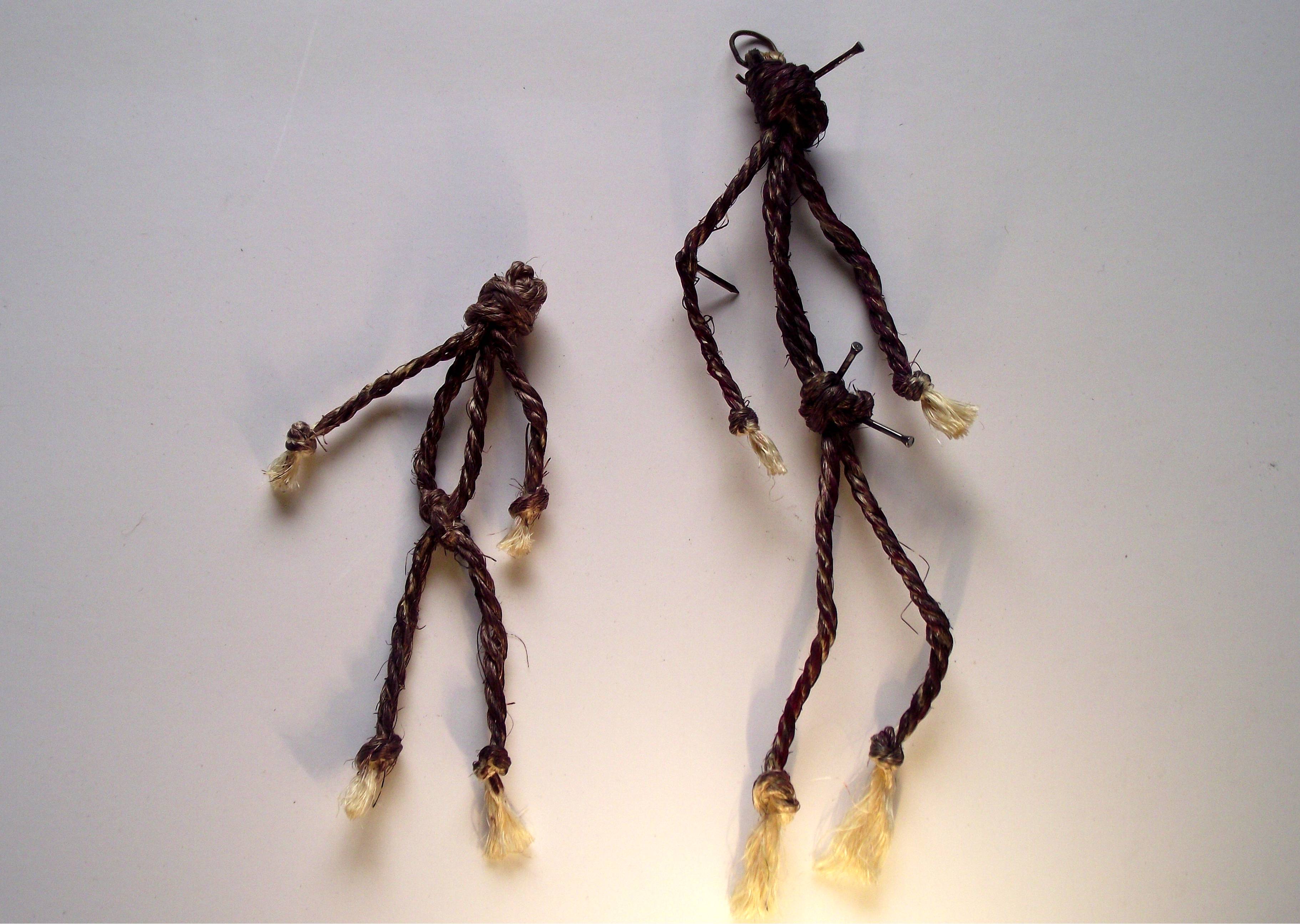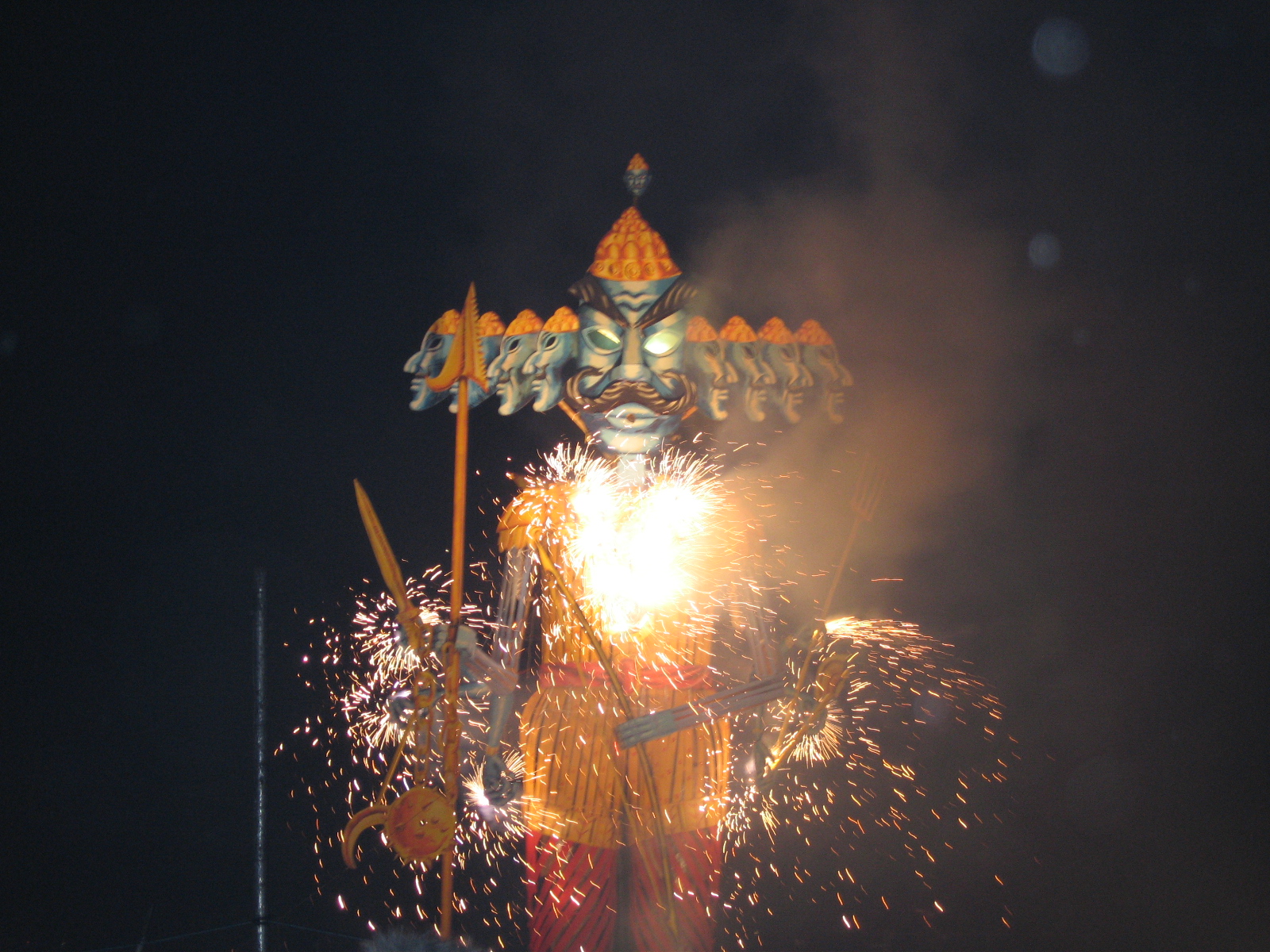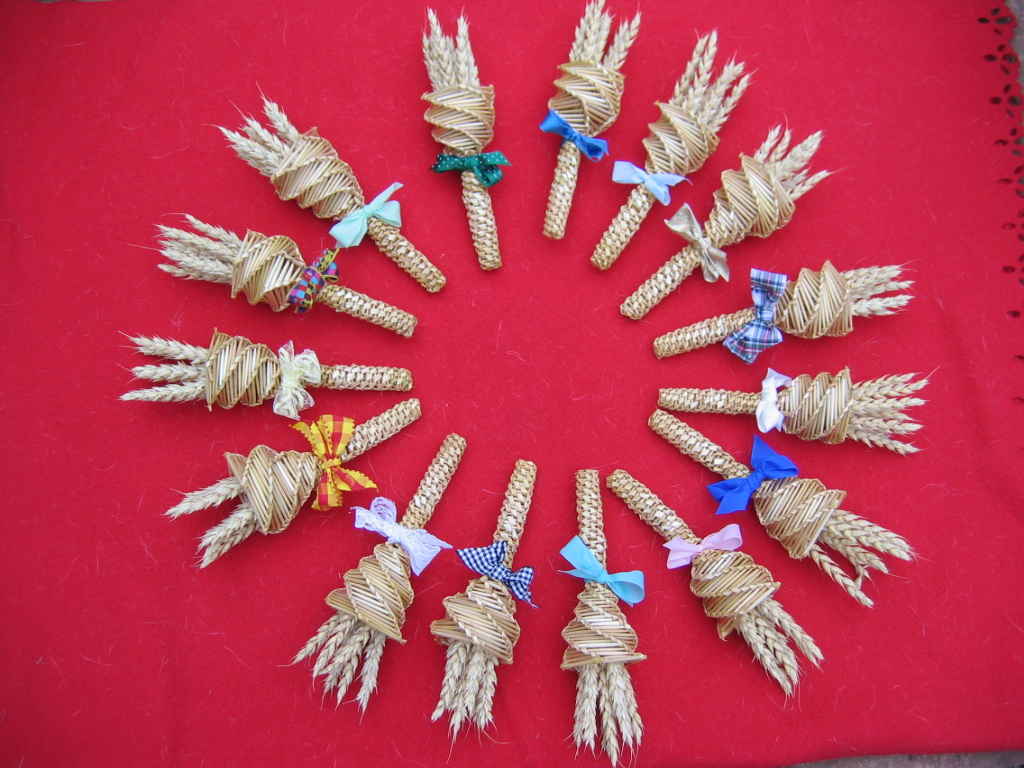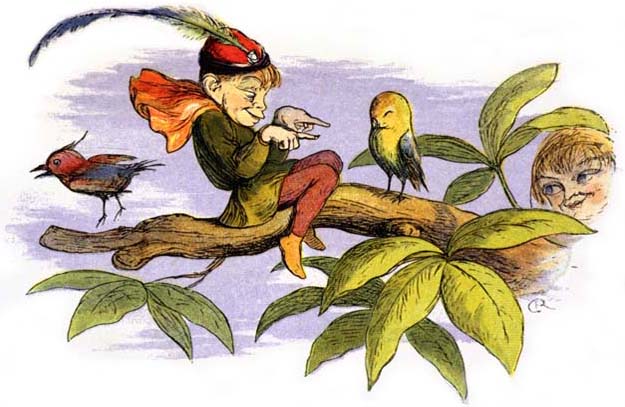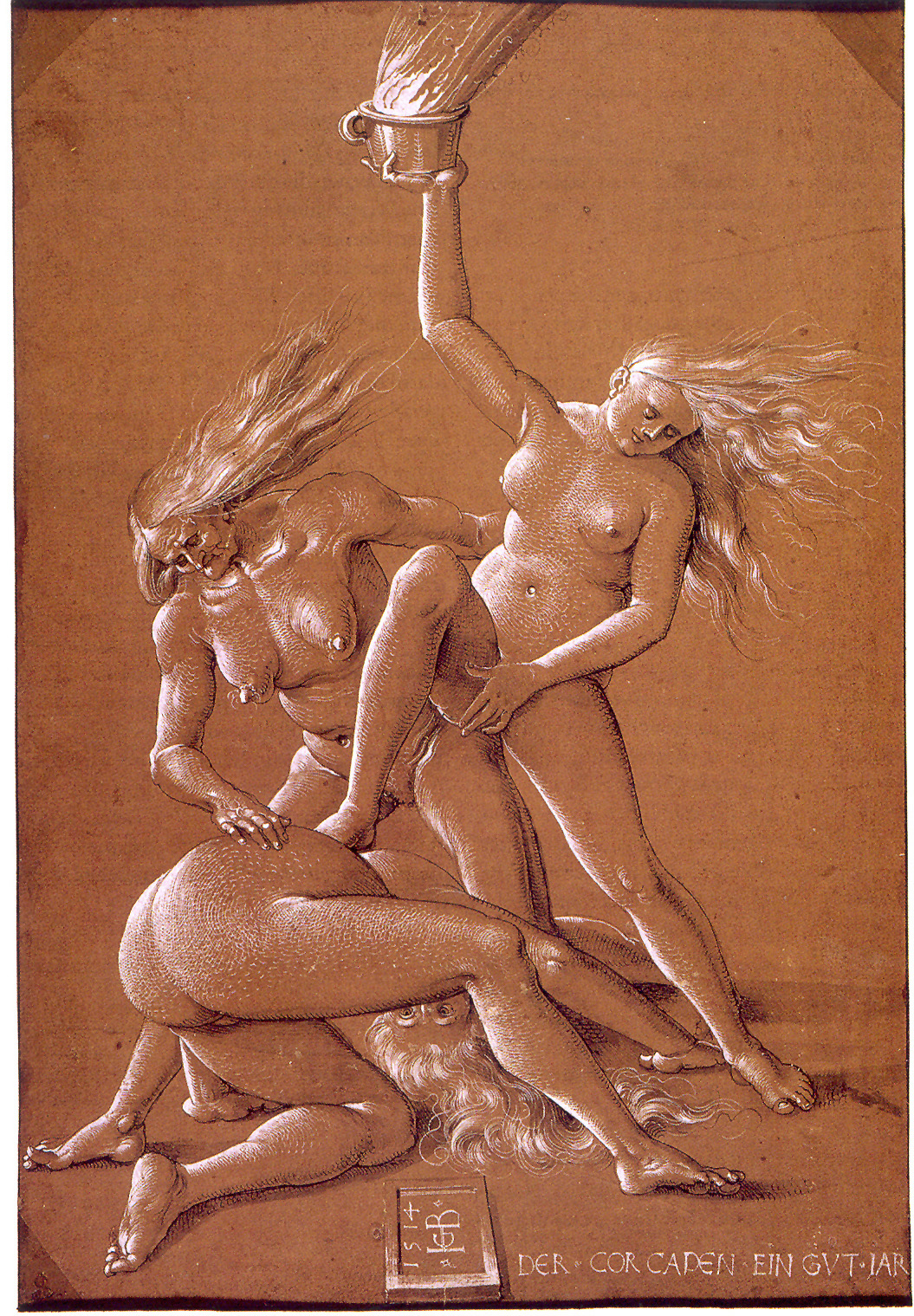|
Poppet
In folk magic and witchcraft, a poppet (also known as poppit, moppet, mommet or pippy) is a doll made to represent a person, for casting spells on that person or to aid that person through magic. They are occasionally found lodged in chimneys. These dolls may be fashioned from such materials as a carved root, grain or corn shafts, a fruit, paper, wax, a potato, clay, branches, or cloth stuffed with herbs with the intent that any actions performed upon the effigy will be transferred to the subject based on sympathetic magic. Poppets are also used as kitchen witch figures. Etymology The word ''poppet'' is an older spelling of ''puppet'', from Middle English ''popet'', meaning a small child or a doll. In British English it continues to hold this meaning. ''Poppet'' is also a chiefly British term of endearment or diminutive referring to a young child or girl, [...More Info...] [...Related Items...] OR: [Wikipedia] [Google] [Baidu] |
Effigy
An effigy is an often life-size sculptural representation of a specific person, or a prototypical figure. The term is mostly used for the makeshift dummies used for symbolic punishment in political protests and for the figures burned in certain traditions around New Year, Carnival and Easter. In European cultures, effigies were in the past also used for punishment in formal justice, when the perpetrator could not be apprehended, and in popular justice practices of social shaming and exclusion. Additionally, "effigy" is used for certain traditional forms of sculpture, namely tomb effigies, funeral effigies and coin effigies. There is a large overlap and exchange between the ephemeral forms of effigies. Traditional holiday effigies are often politically charged, for instance, when the generalised figures Año Viejo (the Old Year) or Judas in Latin America are substituted by the effigy of a despised politician. Traditional forms are also borrowed for political protests. In India, ... [...More Info...] [...Related Items...] OR: [Wikipedia] [Google] [Baidu] |
Corn Dolly
Corn dollies or corn mothers are a form of straw work made as part of harvest customs of Europe before mechanization. Before Christianisation, in traditional pagan European culture it was believed that the spirit of the corn (in American English, "corn" would be "grain") lived amongst the crop, and that the harvest made it effectively homeless. James Frazer devotes chapters in ''The Golden Bough'' to "Corn-Mother and Corn-Maiden in Northern Europe" (chs. 45–48) and adduces European folkloric examples collected in great abundance by the folklorist Wilhelm Mannhardt. Among the customs attached to the last sheaf of the harvest were hollow shapes fashioned from the last sheaf of wheat or other cereal crops. The corn spirit would then spend the winter in this home until the "corn dolly" was ploughed into the first furrow of the new season. Background James George Frazer discusses the Corn-mother and the Corn-maiden in Northern Europe, and the harvest rituals that were being prac ... [...More Info...] [...Related Items...] OR: [Wikipedia] [Google] [Baidu] |
Witch Bottle
A witch bottle is a counter-magical item used as protection against witchcraft. They are described in historical sources in England and the United States. The earliest surviving mention of a witch bottle is from 17th century England. Origins and purpose One of the earliest descriptions of a witch bottle in Suffolk, England, appears in 1681 in Joseph Glanvill’s ''Saducismus Triumphatus, or Evidence concerning Witches and Apparitions'': Since at least the early modern period it has been a common custom to hide objects such as written charms, dried cats, horse skulls, concealed shoes, and witch bottles in the structure of a building. Folk magic contends that witch bottles protect against evil spirits and magical attack, and counteract spells cast by witches; they are countermagical devices, the purpose of which is to draw in and trap harmful intentions directed at their owners. Description Some of the earliest documented witch bottles consist of salt glazed stoneware jug ... [...More Info...] [...Related Items...] OR: [Wikipedia] [Google] [Baidu] |
Kitchen Witch
A kitchen witch, sometimes called a cottage witch is a homemade poppet or doll resembling a stereotypical witch or crone displayed in residential kitchens as a good luck charm and to ward off bad spirits. History There is some debate over where the kitchen witch originated, some claiming Scandinavia and others Germany, but consensus points to older Northern European customs, as it seems to have been more widespread earlier. The poppet is supposed to depict a "good" witch who inspires productivity and safety in a kitchen, but also counteracts any ill-will directed to the home. It is considered good luck to give a kitchen witch to a friend or family member. So that those unfamiliar with the kitchen witch can understand its meaning, sometimes a note will be hung around the witch's neck stating something similar to: The Legendary Secret of Goof-Proof Cooking: The Famous Kitchen Witch For centuries, Norwegians have hung this good witch in their kitchen. They believe she has the powe ... [...More Info...] [...Related Items...] OR: [Wikipedia] [Google] [Baidu] |
Puppet
A puppet is an object, often resembling a human, animal or Legendary creature, mythical figure, that is animated or manipulated by a person called a puppeteer. The puppeteer uses movements of their hands, arms, or control devices such as rods or strings to move the body, head, limbs, and in some cases the mouth and eyes of the puppet. The puppeteer often speaks in the voice of the character of the puppet, and then synchronizes the movements of the puppet's mouth with this spoken part. The actions, gestures and spoken parts acted out by the puppeteer with the puppet are typically used in storytelling. Puppetry is a very ancient form of theatre which dates back to the 5th century BC in Ancient Greece. There are many different varieties of puppets, and they are made from a wide range of materials, depending on their form and intended use. They range from very simple in construction and operation to very complex. Two simple types of puppets are the finger puppet, which is a tiny p ... [...More Info...] [...Related Items...] OR: [Wikipedia] [Google] [Baidu] |
Voodoo Doll
The term Voodoo doll commonly describes an effigy into which pins are inserted. Such practices are found in various forms in the magical traditions of many cultures around the world. Despite its name, the dolls are not prominent in Haitian Vodou and not used in Louisiana Voodoo. The practise has been denounced and declared irrelevant to Voodoo religion by those in High Priesthood of Louisiana Voodoo. Depictions in Culture 20th-century link with Forces The link between this magical practice and Voodoo was established through the presentation of the latter in Western popular culture, enduring the first half of the 20th century. In this, the myth of this magical practice being closely linked to Voodoo and Vodou was promoted as part of the wider negative depictions of blacks and Afro-Caribbean religious practices in the United States. In John Houston Craige's 1933 book ''Black Bagdad: The Arabian Nights Adventures of a Marine Captain in Haiti'', he described a Haitian prisone ... [...More Info...] [...Related Items...] OR: [Wikipedia] [Google] [Baidu] |
Hōko (doll)
A is a kind of soft-bodied doll given to young women of age and especially to pregnant women in Japan to protect both mother and unborn child. Traditionally, ''hōko'' dolls were made of silk and human hair, and stuffed with cotton. The dolls could be made for both boys and girls. Boys' dolls would be given up and "consecrated" at a shrine when boys came of age at 15 years old, while girls would give up their dolls at marriage. The dolls were given to children either at birth, or on special days shortly after birth. Pregnant woman would be given new ones, so as to protect her and her unborn child together, for the duration of the pregnancy. History ''Hōko'' can be traced back to "talismanic figures" from early Japanese history, and are likely related to the concept of using paper dolls (''hina''), as "stand-ins for people." The use of in spiritual practice as stand-ins to take on the brunt of a person's sins or misfortune also played a role in the creation of ''hōko'' dolls ... [...More Info...] [...Related Items...] OR: [Wikipedia] [Google] [Baidu] |
Witch Dolls Poppets Curse
Witchcraft traditionally means the use of magic or supernatural powers to harm others. A practitioner is a witch. In medieval and early modern Europe, where the term originated, accused witches were usually women who were believed to have used malevolent magic against their own community, and often to have communed with evil beings. It was thought witchcraft could be thwarted by protective magic or counter-magic, which could be provided by cunning folk or folk healers. Suspected witches were also intimidated, banished, attacked or killed. Often they would be formally prosecuted and punished, if found guilty or simply believed to be guilty. European witch-hunts and witch trials in the early modern period led to tens of thousands of executions. In some regions, many of those accused of witchcraft were folk healers or midwives. European belief in witchcraft gradually dwindled during and after the Age of Enlightenment. Contemporary cultures that believe in magic and the superna ... [...More Info...] [...Related Items...] OR: [Wikipedia] [Google] [Baidu] |
English Folklore
English folklore consists of the myths and legends of England, including the English region's mythical creatures, traditional recipes, urban legends, proverbs, superstitions, and folktales. Its cultural history is rooted in Celtic, Christian, and Germanic folklore. During the Renaissance in the 16th century, England looked to more European texts to develop a national identity. English folklore has continued to differ according to region, although there are shared elements across the country. Its folktales include the traditional Robin Hood tales and the Brythonic-inspired Arthurian legend, and their stories often contained a moral imperative stemming from Christian values. The folktales, characters and creatures are often derived from aspects of English experience, such as topography, architecture, real people, or real events. History Before England was founded in the year 927, Wessex and its surrounding areas' cultures were transformed by the invasion of the Danis ... [...More Info...] [...Related Items...] OR: [Wikipedia] [Google] [Baidu] |
Dolls
A doll is a physical model, model typically of a human or humanoid character, often used as a toy for children. Dolls have also been used in traditional religious rituals throughout the world. Traditional dolls made of materials such as clay and wood are found in the Americas, Asia, Africa and Europe. The earliest documented dolls go back to the ancient civilizations of Ancient Egypt, Egypt, Ancient Greece, Greece, and Ancient Rome, Rome. They have been made as crude, rudimentary playthings as well as elaborate art. Modern doll manufacturing has its roots in Germany, from the 15th century. With Industrialisation, industrialization and new materials such as porcelain and plastic, dolls were increasingly mass-produced. During the 20th century, dolls became increasingly popular as collectibles. History, types and materials Early history and traditional dolls The earliest dolls were made from available materials such as clay, stone, wood, bone, ivory, leather, or wax. Archaeology ... [...More Info...] [...Related Items...] OR: [Wikipedia] [Google] [Baidu] |
Traditional Dolls
A tradition is a belief or behavior (folk custom) passed down within a group or society with symbolic meaning or special significance with origins in the past. A component of cultural expressions and folklore, common examples include holidays or impractical but socially meaningful clothes (like lawyers' wigs or military officers' spurs), but the idea has also been applied to social norms such as greetings. Traditions can persist and evolve for thousands of years—the word ''tradition'' itself derives from the Latin ''tradere'' literally meaning to transmit, to hand over, to give for safekeeping. While it is commonly assumed that traditions have an ancient history, many traditions have been invented on purpose, whether that be political or cultural, over short periods of time. Various academic disciplines also use the word in a variety of ways. The phrase "according to tradition", or "by tradition", usually means that whatever information follows is known only by oral tradition, ... [...More Info...] [...Related Items...] OR: [Wikipedia] [Google] [Baidu] |
European Witchcraft
Belief in witchcraft in Europe can be traced to classical antiquity and has continuous history during the Middle Ages, culminating in the Early Modern witch trials and giving rise to the fairy tale and popular culture "witch" stock character of modern times, as well as to the concept of the "modern witch" in Wicca and related movements of contemporary witchcraft. In medieval and early modern Europe, accused witches were usually women who were believed to have used magic to cause harm and misfortune to members of their own community. Witchcraft was seen as immoral and often thought to involve communion with evil beings, such as a " Deal with the Devil". It was believed witchcraft could be thwarted by protective magic or counter-magic, which could be provided by the cunning folk. Suspected witches were also intimidated, banished, attacked or lynched. Often they would be formally prosecuted and punished if found guilty. European witch-hunts and witch trials in the early moder ... [...More Info...] [...Related Items...] OR: [Wikipedia] [Google] [Baidu] |
